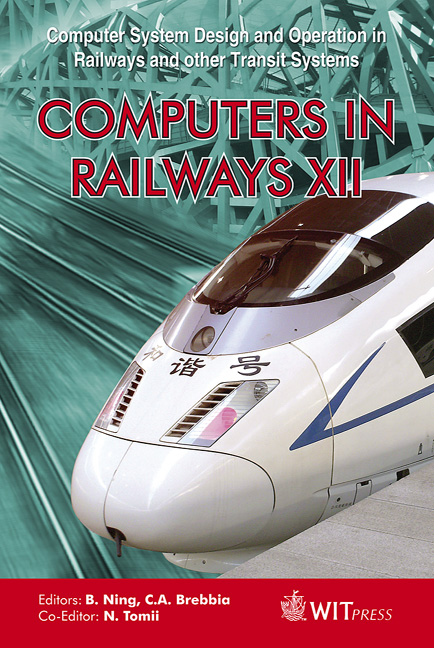Latent Energy Savings Due To The Innovative Use Of Advisory Speeds To Avoid Occupation Conflicts
Price
Free (open access)
Transaction
Volume
114
Pages
10
Page Range
99 - 108
Published
2010
Size
636 kb
Paper DOI
10.2495/CR100101
Copyright
WIT Press
Author(s)
F. Mehta, C. Rößiger & M. Montigel
Abstract
Track occupation conflicts are frequent in standard railway operations today. Train drivers, who are not aware of such conflicts in advance, are forced to stop, which results in additional delays, timetable instability, and a waste of energy. This could be avoided if they were informed about the conflict and had a chance to adapt their driving behaviour accordingly. The innovative computer-based train control system \“Automatic Functions Lötschberg” (AF), developed by systransis Ltd, tries to reduce these negative effects by sending advisory speeds to the drivers of conflict affected trains in the Lötschberg base tunnel. This article presents the results of a study done using real operational data from the Lötschberg base tunnel to estimate the energy savings due to the AF sending advisory speeds. These results are then extrapolated to estimate the latent energy savings that could be achieved if a system like the AF were in operation over the entire Swiss railway network. Keywords: advanced train control, energy savings, advisory speeds. 1 Introduction With a length of 34.6 km under the Swiss Alps, the Lötschberg base tunnel is currently the longest land tunnel in the world. The computer-based train control system \“Automatic Functions Lötschberg” (AF), developed by systransis Ltd. as a subcontractor of Thales Ltd, has been monitoring and controlling the train traffic through the Lötschberg base tunnel since its opening in December 2007. The topology of the tunnel introduces special challenges in its operation. The northernmost two thirds of the tunnel is a single-track section, which feeds into a two-track section in the south via the high-speed point \“W60”. Figure 1 illustrates this topology. Solving track occupation conflicts between trains is especially important since the single-track section needs to be used optimally.
Keywords
advanced train control, energy savings, advisory speeds





